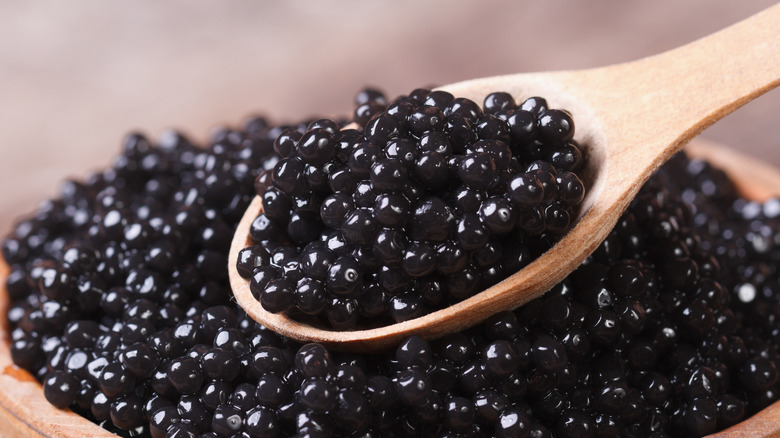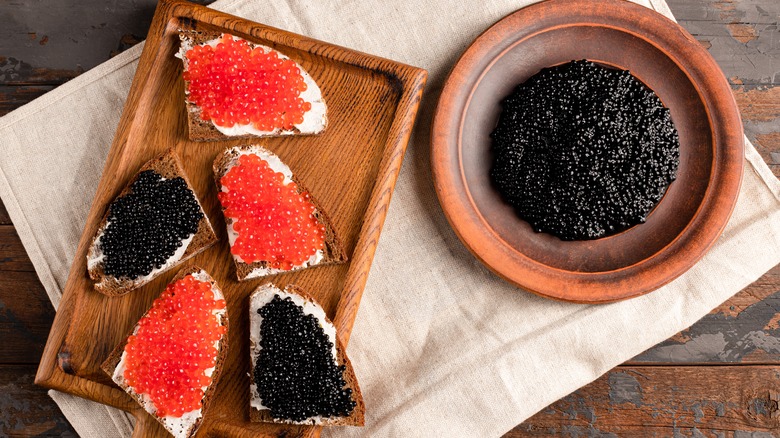The New Jersey Town Once Known As The 'Caviar Capital Of The World'
The delicacy known as caviar is one we think of as a luxury in these modern times. They are salty little fish eggs that taste divine alongside crackers and a glass of champagne. They are not something you expect to see on the menu of a truck-stop dinner or a small-town family restaurant, and that's because they are so expensive. MasterClass reports that beluga caviar (aka "black gold") is the most expensive in the world, costing close to $3,500 a pound.
Caviar is unfertilized sturgeon eggs that are traditionally served fresh and cold. There are a dozen or so sturgeon that produce quality caviar, though the Caviar Star says that the United States is one of the few places in the world that allows any fish roe which has been cured to carry the "caviar" label. The World's Top Exporters claim that in 2021, the top true caviar exporters were the countries China, Italy, France, Germany, and Poland, making up 75.2% of total sales. But just a few centuries ago, the caviar capital of the world was found on the United State's eastern shores.
Caviar Point, New Jersey
Welcome to the shores of New Jersey, where sturgeon caviar once flowed from the rivers freely and cheaply. According to New Jersey Monthly, the Delaware River –which borders Pennsylvania, Delaware, and New Jersey and eventually leads to the Atlantic Ocean– was fully taken advantage of in the 19th century when Henry Schacht, a German immigrant, established the roots of the East Coast caviar industry himself. He and his fisherman harvested the sturgeon roe, cured it, and sold it out of the town known as Caviar Point in Cumberland County, aka Bayside.
Historic Greenwich Township tells us that the small town quickly became considered the caviar capital of the world, with 400 fishermen living on site. Schacht's caviar business thrived up until 1925, when pollution and overfishing caused the industry on the Delaware to die out. While we consider caviar a high-end and refined food now, Eater says that back in America's early days, caviar was inexpensive and was not even considered worth human consumption and was only fed to livestock. It wasn't until 1850 that European migrants like Henry Schacht in the United States started eating it as a cheap source of protein; until then, caviar was one of America's untapped and under-appreciated resources.

